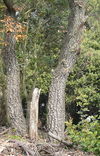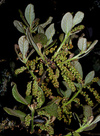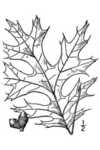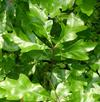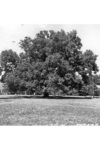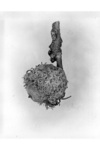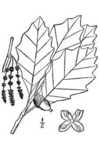Genus Quercus
An oak is a tree or shrub in the genus Quercus , of which about 600 species exist on earth.Species in the genus Quercus of plants
Buckley oak - It is a highly regarded ornamental and shade tree. In autumn the leaves turn vivid red and orange.
Daimyo oak - It is a deciduous tree growing up to 20-25 m tall, with a trunk up to 1 m diameter. Its foliage is remarkable for its size, among the largest of all oaks, consisting of a short hairy petiole, 1–1.5 cm long, and a blade 10–40 cm long and 15–30 cm broad, with a shallowly lobed margin; the form is reminiscent of an enormous Pedunculate Oak leaf. The leaves are often retained dead on the tree into winter. Both sides of the leaf are initially downy with the upper surface becoming smooth.
Coastal sage scrub oak - Quercus dumosa is found in Mexico and the US.
Northern pin oak - It is a medium-sized deciduous tree growing to 20 m tall with an open, rounded crown. The leaves are glossy green, 7-13 cm long and 5-10 cm broad, lobed, with five or seven lobes, and deep sinuses between the lobes. Each lobe has 3-7 bristle-tipped teeth. The leaf is nearly hairless, except for small tufts of pale orange-brown down where the lobe veins join the central vein. The acorns tend to be ellipsoid , though they tend to be highly variable and range to globose, 6-11 mm long and 10-19 mm broad, a third to a half covered in a deep cup, green maturing pale brown about 18 months after pollination; the kernel is very bitter. The inner surface of the acorn cap is glabrous to sparsely or moderately pubescent, and the hairs if present tend to be kinky rather than straight.
Engelmann oak - It is a small tree growing to 10 m tall, generally evergreen, but may be drought-deciduous during the hot, dry local summers, and has a rounded or elliptical canopy. The bark is thick, furrowed, and light gray-brown. The leaves are leathery, 3-6 cm long and 1-2 cm broad, of a blue-green color, and may be flat or wavy, with smooth margins. The flowers are catkins; the fruit is an acorn 1.5-2.5 cm long, maturing 6–8 months after pollination.
Georgia oak - It is a small tree, often shrubby, growing to 8-15 m tall. The shiny green leaves are 4-13 cm long and 2-9 cm wide, with a 0.6-2.3 cm petiole, and five irregular, pointed, bristle-tipped lobes; they are glabrous , except for small but conspicuous tufts of hairs in the vein axils on the underside. The leaves turn dark red to brown in the autumn, stay on the tree throughout the winter, and fall as the new leaves bud in the spring. The acorns are round, 9-14 mm long, maturing about 18 months after pollination.
Chisos red oak - Grave's Oak can be found in three areas of southwest Texas, including Big Bend National Park, and mountain ranges of neighboring Coahuila state.
Quercus gulielmitreleasei - Quercus gulielmitreleasei is a species of plant in the Fagaceae family. It is found in Costa Rica and Panama.
Bur oak - It occurs from the Appalachian Mountains west to the middle of the Great Plains, extending to central Texas, across southernmost Manitoba, Ontario and Quebec, east to the Atlantic Coast in southern New Brunswick and down the coast to Delaware. Bur Oak is the state tree of Iowa.
Oglethorpe oak - Trees grow to approximately 25 meters in height, with a diameter at breast height of about 80 cm.
Dwarf chinkapin oak - As suggested by its botanical species name, dwarf chinkapin oak resembles chestnut oak . However, it is more closely related to chinkapin oak . Indeed, the two are sometimes considered as conspecific, in which case the larger chinkapin oak is classed as a variety of Quercus prinoides because the dwarf form was described first. The two may be disguished by differences in habit and habitat .
Pedunculate Oak - Q. robur is the type species of the genus , and a member of the white oak section Quercus section Quercus. The populations in Italy, southeast Europe, and Asia Minor and the Caucasus are sometimes treated as separate species, Q. brutia Tenore, Q. pedunculiflora K. Koch and Q. haas Kotschy respectively.
Island live oak - The Island Oak, Quercus tomentella, is endemic to six islands off the coast of California and the Baja California Peninsula including:


